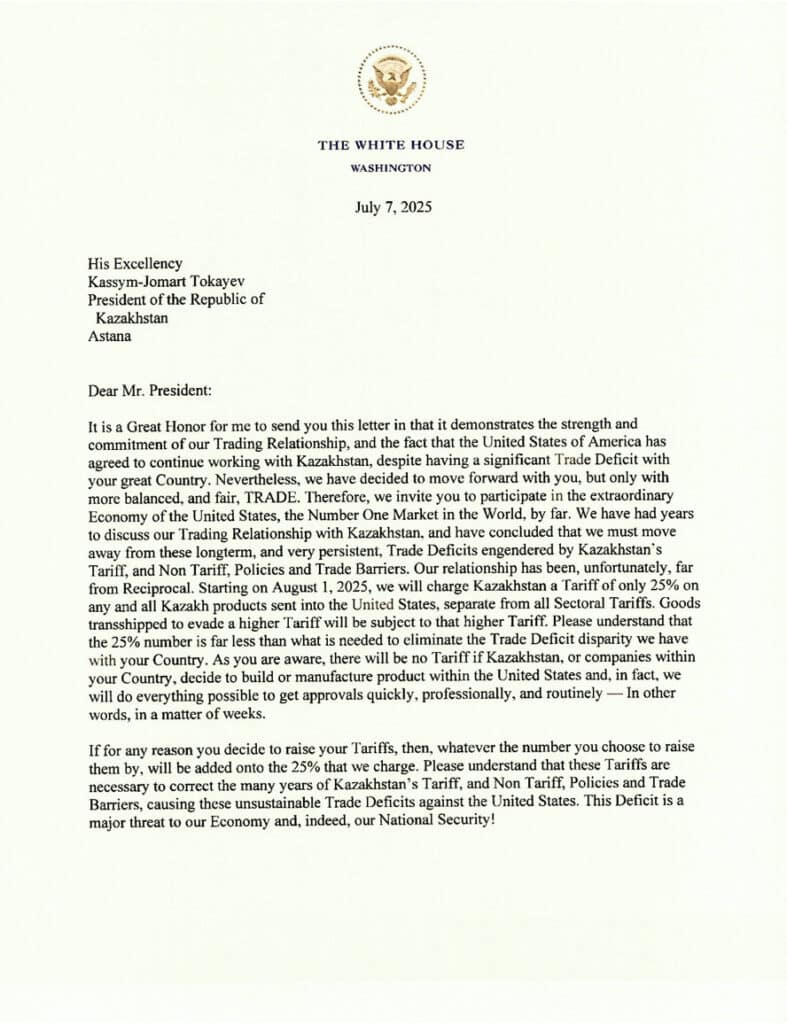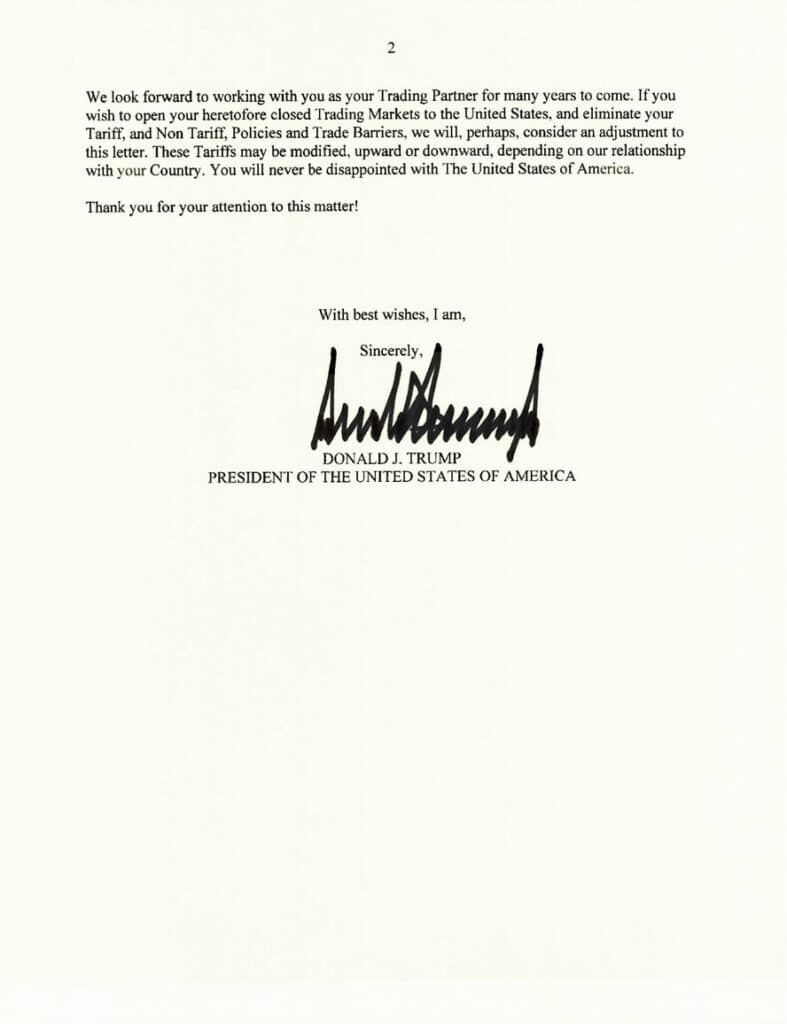President Trump imposes 25% duties on Kazakhstan

U.S. President Donald Trump has introduced a new 25% duty on goods imported from Kazakhstan. He notified his Kazakh counterpart President Kassym-Jomart Tokayev, about the move in an official letter, which he posted on Truth Social. The new tariff is expected to take effect on August 1.
In his letter, the U.S. president chose not to focus on the tightening of trade conditions (until now, a temporary 10% duty had been in effect for Kazakh goods), but rather emphasized the decision to continue trading with Kazakhstan — which Trump called «a great country» — despite the ongoing bilateral trade deficit for the U.S.


As he has done many times before, Trump justified the duties by citing alleged barriers to American goods entering the Kazakh market. He described these as «tariff and non-tariff practices and trade barriers.» Trump emphasized that bilateral trade relations are far from mutually beneficial and urged Tokayev to accept that, under these circumstances, it would be «fair» to introduce even higher duties than 25%.
In conclusion, Trump warned Astana against taking any retaliatory measures, making it clear that if it does, the U.S. will respond by proportionally increasing the tariff, adding 25% onto «whatever number you choose.»
Alongside Kazakhstan, similar letters were sent to the leaders of Malaysia (25%), Laos (40%), South Africa (30%), Myanmar (40%), Japan and South Korea (25% each).
In April, when Trump announced the first round of tariffs on most countries worldwide, only 4.8% of Kazakhstan’s total exports to the U.S. were subject to the 27% duty. The exemptions mostly applied to raw materials such as oil and uranium. The recent letter to President Tokayev does not clarify whether any exceptions for specific categories of Kazakh goods will be made this time.
Back in April, the imposition of new tariffs followed negotiations between the U.S. and its trading partners aimed at reducing the rates. A few days after the announcement, Trump decided to lower tariffs for every nation except China to 10% for three months. What followed was a tit-for-tat exchange of rate hikes between Washington and Beijing, peaking at a 145% tariff on Chinese goods, before an eventual agreement to de-escalate. As a result, the current tariff rate on Chinese goods entering the U.S. stands at 50%, while Chinese tariffs on American goods remain at 10%.
Last year, Kazakhstan reported its highest value of exports to the U.S. in over a decade — $1.97 billion. Notably, these exports, which mainly consist of oil, uranium (up fivefold from 2023), ferroalloys and silver, accounted for just 2.4% of Kazakhstan’s overall export volume. The country’s main export partners in 2024 were Italy (22.9%), China (18.3%), Russia (11.7%), the Netherlands (6.5%), France (4.5%) and Turkey (4.1%). Still, the U.S. remains one of Kazakhstan’s top import sources. In 2024, Kazakhstan imported $2.24 billion worth of goods from the U.S., making up 3.4% of its total imports. In percentage terms, the U.S. ranked fourth, after Russia (30.5%), China (25.3%) and Germany (4.7%).

